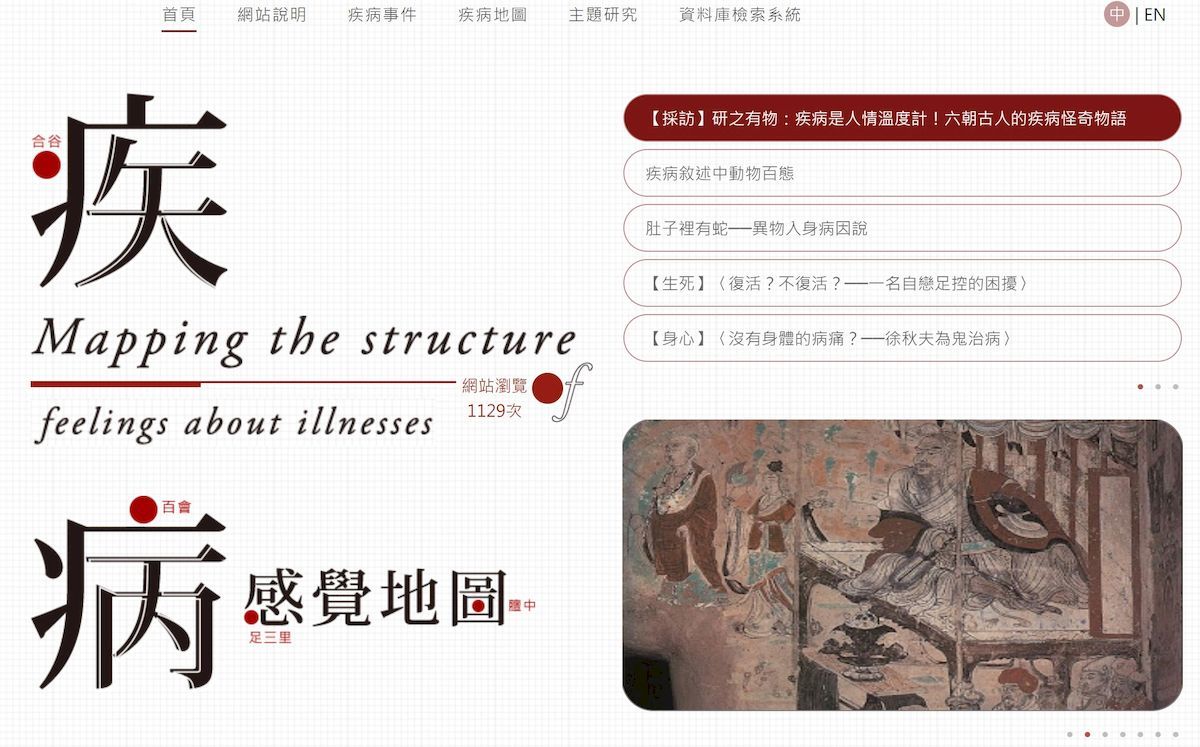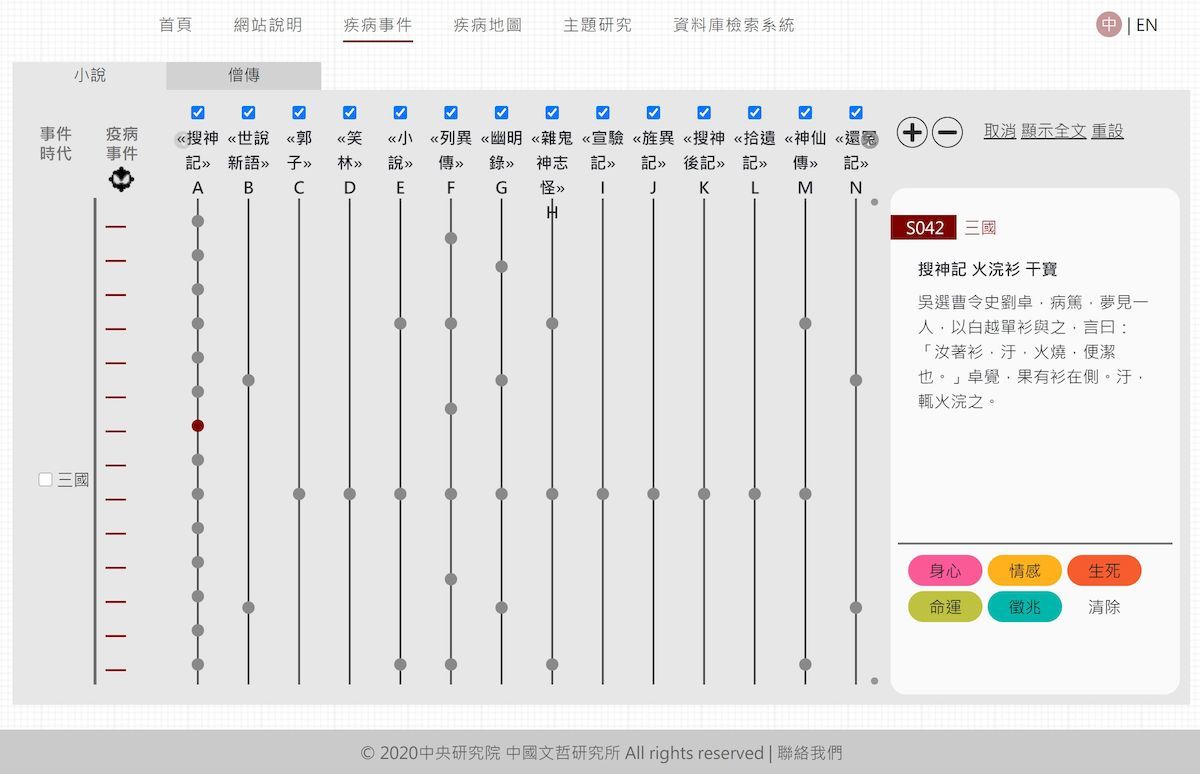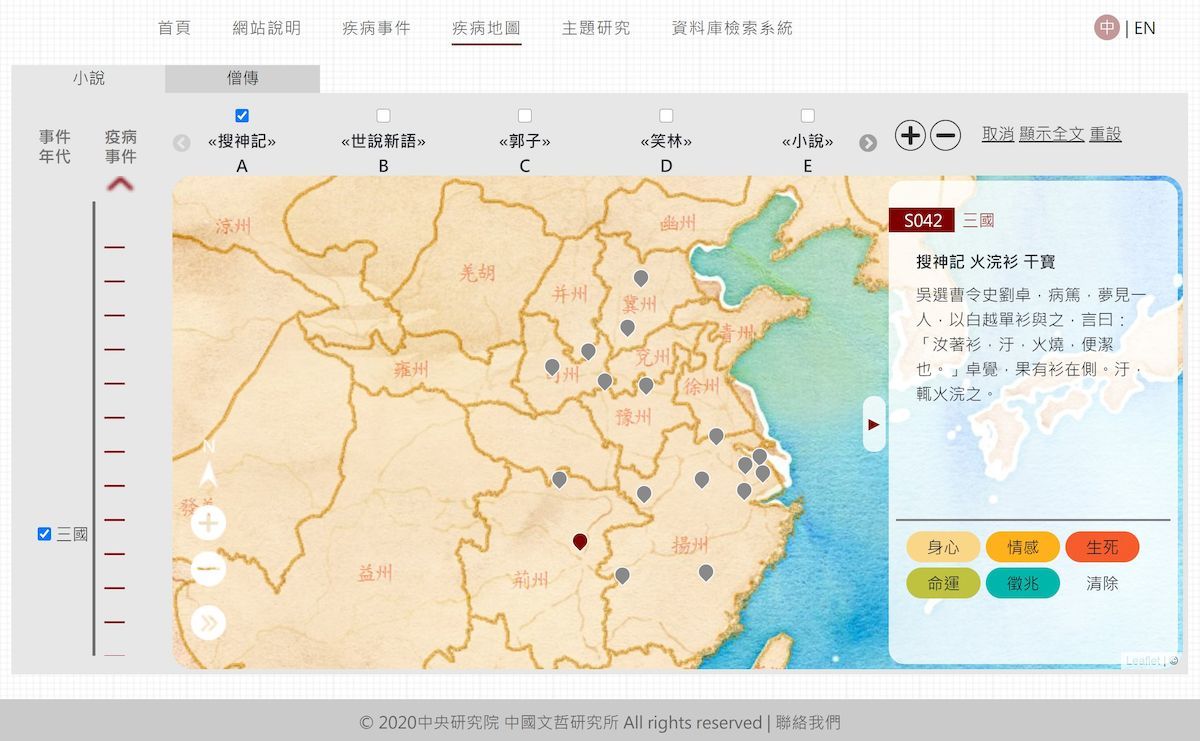
The "Mapping the Structure of Feelings about Illnesses" thematic scholarly website is officially online! This cross-disciplinary undertaking applies "events" and "maps" to the research of illness narratives.
The "Ethereal Drip-drops Digital Humanities Research Space" research team from Academia Sinica's Institute of Chinese Literature and Philosophy officially launched the "Mapping the Structure of Feelings of Illnesses" website in July, which examines from a contemporary perspective the illness events which people experienced throughout Chinese history, and reflects on the wisdom and attitude of the ancients. By applying the technical tools of digital humanities to the research problems of the field, it reveals the shifting emphases of illness narratives from different texts in different historical periods through visualized graphs and maps.
The website represents the culmination of research from two projects: "Suffering from Illness and Fear of Death: Digital Humanities Research on Illness Narratives in Eminent Buddhist Monk Biographies from Historical Perspective" (2019, Academia Sinica Center for Digital Cultures) and "Mapping the Structure of the Feeling of Illness: A Database of Writings on Illness in the Wei-Jin, Northern and Southern Dynasties Short Stories with GIS" (2012-2015, MOST).
The strength of the website is its focus on illness events as presented in texts. The illness events are edited from historical texts, including official histories, annals, chronicles, and gazetteers, used to outline the historical discourse and serve as reference points paired to passages describing illness from thirty-five collections of Wei-Jin, Northern and Southern Dynasties short stories and four eminent Buddhist monk biographies from the Liang, Tang, Song and Ming dynasties, thus emphasizing the narrative focus in different types of texts.

"Illness Events": Important illness events in Chinese history are organized via historical texts such as the thirty-five collections of Wei-Jin, Northern and Southern Dynasties short stories and four eminent Buddhist monk biographies from the Liang, Tang, Song, and Ming dynasties.
By introducing spatial visualization methods, a historical illness map can be drawn, taking as a main coordinate the birthplace of the sick person in the short stories, or the residence of the sick monk in the biographies.

"Illness Map": Introducing spatial event coordinates to create historical maps.
The website provides an illness narrative database built upon a foundation of texts, featuring search and statistical functions. Through the research team led by Institute of Chinese Literature and Philosophy research fellow Liu Yuan-ju, authority word files and text markup are utilized to extract illness-related paragraphs from the stories and biographies to construct a database of illness narratives. The database comprises full texts, person name, place, works cited, historical period, type of event, etc. Statistics are presented in bar charts, and users can search and read the full texts of the illness events.

"Database search": Readers can perform advanced search with fields such as full text, person name, place, works cited, historical period, type of event, etc.
Illness is a common human experience with a distinct social character and far-reaching influence on those close to the patient, the healer, or even the whole society, with the meaning of the illness shifting according to the roles of the different players. The short articles under the website's "Special Issues" section present the themes revealed in ancient Chinese illness narratives, inviting readers to explore the multifaceted nature of illness in ancient Chinese literature and culture.